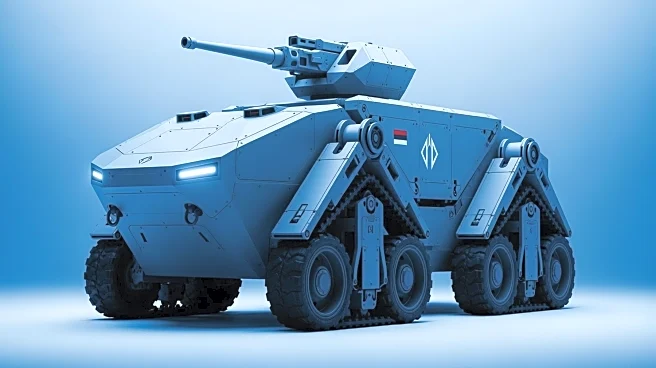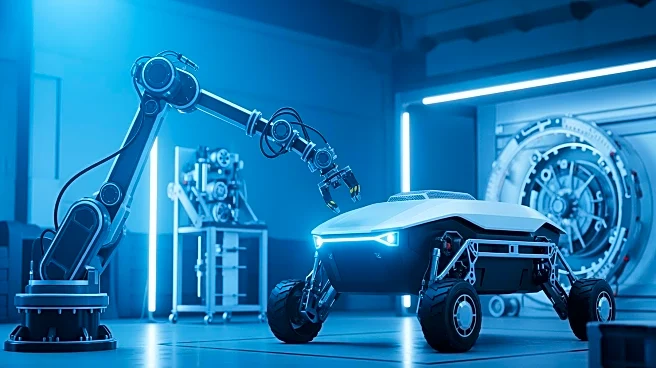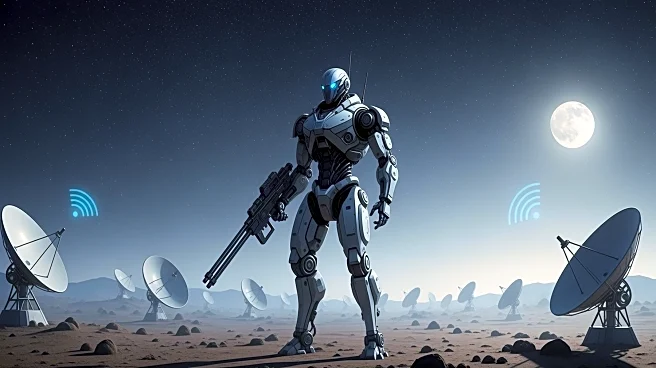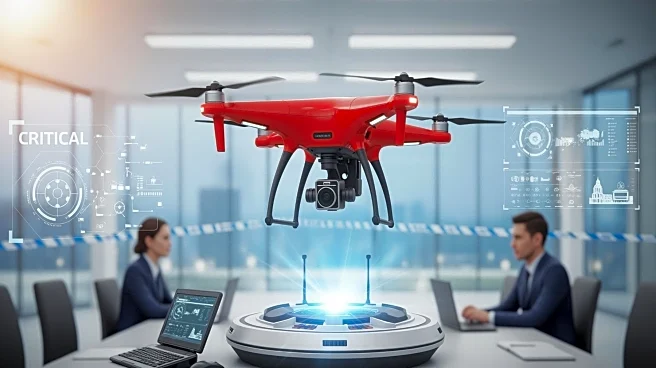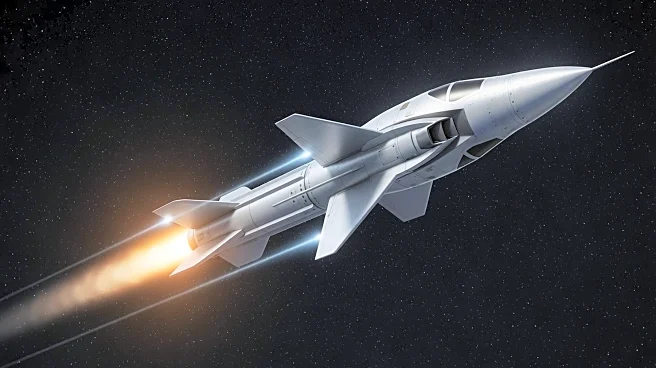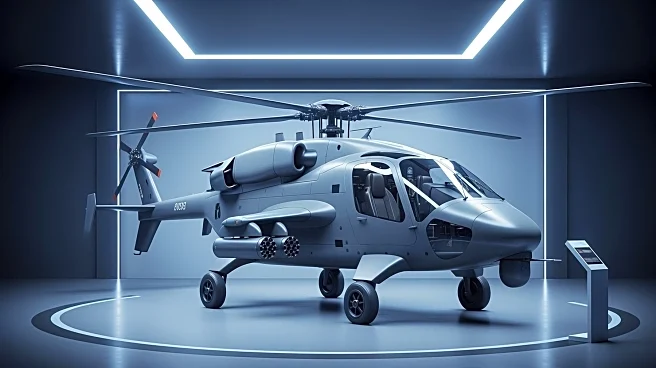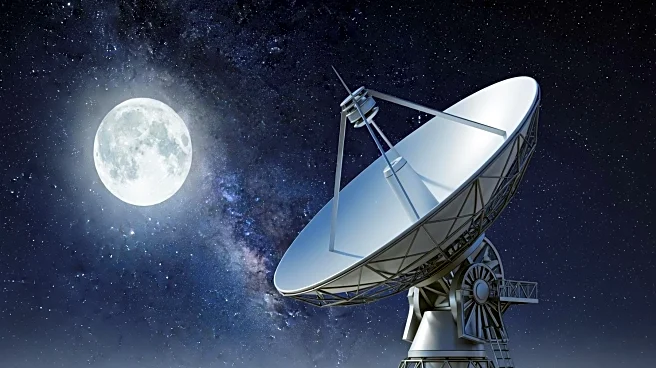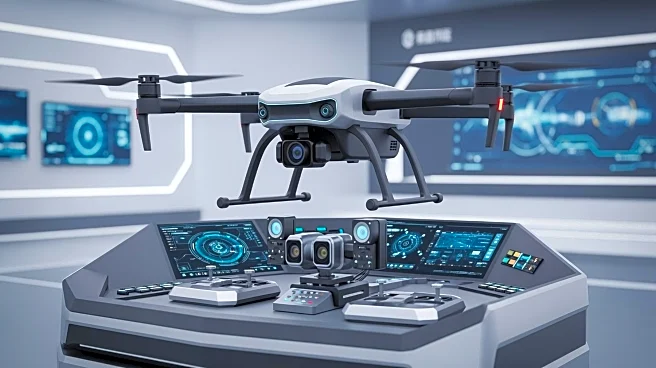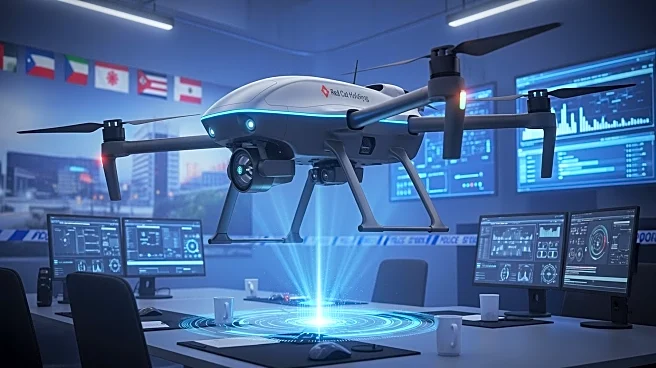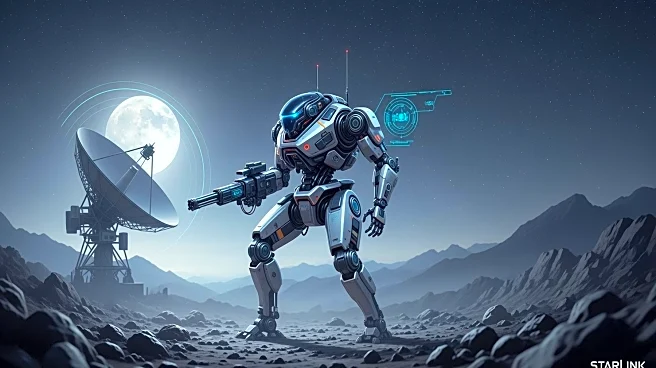What's Happening?
Textron Systems, in collaboration with AM General and Carnegie Robotics, is developing a new Unmanned Ground Vehicle (UGV) for the U.S. Army's Medium Modular Equipment Transport (M-MET) program. This initiative
aims to enhance the Army's logistics capabilities by providing a modular, autonomous platform capable of transporting supplies and generating operational energy. The UGV will feature a rugged chassis, advanced suspension, and a hybrid-electric powerpack, offering over 30 kW of exportable power. The vehicle's design will support the Army's Transformation in Contact (TiC) and Multi-Domain Operations (MDO), ensuring adaptability and rapid integration of mission payloads.
Why It's Important?
The development of this UGV is crucial for modernizing the U.S. Army's logistics and operational capabilities. By closing logistics gaps and enhancing energy resilience, the M-MET program supports the Army's strategic objectives in maintaining mobility and sustainment in complex battlefield environments. The collaboration between Textron Systems, AM General, and Carnegie Robotics leverages each company's strengths, combining industrial manufacturing, autonomy expertise, and vehicle control technology. This partnership reflects the defense industry's commitment to meeting the evolving needs of the U.S. military, ensuring that soldiers have access to cutting-edge technology and equipment.
What's Next?
The M-MET request for proposal is expected to be released in 2026, marking a significant milestone in the program's development. As the project progresses, the collaboration will focus on integrating advanced autonomy software, sensor fusion, and non-weapons payloads. The successful deployment of the UGV will depend on continued innovation and adaptation to meet the Army's changing requirements. Stakeholders, including military leaders and defense contractors, will closely monitor the project's advancements to ensure it aligns with broader modernization efforts.
Beyond the Headlines
The introduction of autonomous systems in military operations raises important ethical and operational considerations. The use of UGVs could transform logistics and combat strategies, reducing the risk to human soldiers and increasing efficiency. However, it also necessitates careful consideration of the rules of engagement and the potential for unintended consequences. The integration of AI and robotics in military applications will require ongoing dialogue between policymakers, technologists, and ethicists to address these challenges and ensure responsible use.
